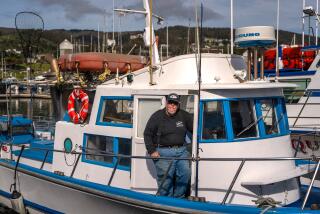State proposes salmon hatchery for San Joaquin River restoration

Stocks of spring-run Chinook salmon would be raised just below the San Joaquin River dam that wiped out their ancestors as part of an ambitious restoration program.
The California Department of Fish and Wildlife this week released draft environmental documents outlining plans to build a conservation hatchery a mile downstream of Friant Dam northeast of Fresno.
The facility, costing nearly $15 million, would be funded with state bond money and completed no later than 2016. It would be used to develop stocks of spring-run Chinook adapted to conditions in the upper San Joaquin, from which they vanished after Friant started to divert most of the upper river’s flow for irrigation in the 1940s.
To promote genetic diversity, biologists hope to eventually stock the hatchery with juveniles and possibly eggs collected from wild populations found in streams elsewhere in the Central Valley. In the meantime, eggs and juveniles would be supplied by the Feather River Fish Hatchery in Oroville, Calif. The salmon would be released into the San Joaquin at the hatchery to imprint them with the waters of the upper river.
The river project is the product of a 2006 legal settlement that calls for increased releases from Friant to restore flows to two dry stretches of the San Joaquin, allowing migrating fall-run and spring-run Chinook to reach some of their historic spawning grounds.
It is estimated that historically more than a half million spring-run Chinook migrated up the San Joaquin River every year. They held over in pools in the upper reaches of the river until fall, when they spawned.
The San Joaquin also supported a less abundant fall run, a portion of which survived with hatchery releases in the river’s major tributaries.
One of the most complicated river restoration efforts in the West, the San Joaquin project has missed deadlines as managers encounter unexpected obstacles to rewatering 60 miles of river that have been dry for six decades.
bettina.boxall@latimes.com @boxall







